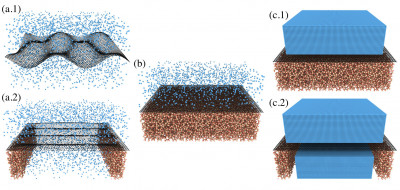News
What we know – and don’t know – about the mechanical and thermal properties of graphene
21 April 2021

In this Featured Article published in Applied Physics Reviews,Prof. David Dunstan from the School of Physics and Astronomy, Prof. Sir Colin Humphreys, Dr. Dimitrios Papageorgiou and Dr. Yiwei Sun from the School of Engineering and Materials Science, review what we know and don't know about the mechanical and thermal properties of graphene, while clarifying points that are often confused in the literature. Remarkably similar to graphite, as a 3D structure rather than as a material, and also displaying 2D phenomena.
Graphene – a 3D structure that displays 2D physics
From the material mechanics point of view, a large part of the challenge of graphene mechanics arises from the ambiguities of defining the thickness of a structure -- here a one-atom-thick surface. From this point of view, it is important to recognise that thickness is not a material property, but a property of a structure, such as a plate. Graphene has a well defined 3D structure, which may be modelled in various ways to help understand its mechanical properties. It meanwhile displays 2D physics, much as can a 100 Å quantum well – which has a 3D physical structure of e.g. GaAs sandwiched between GaAlAs.
Mechanical applications
Composite materials in which matrix material is reinforced mechanically by the inclusion of graphene flakes are perhaps one of the most exciting applications in which the mechanical properties of graphene are central. Many other so-called 2D materials are also used, and their mechanical properties are often less well characterised than those of graphite. One may expect them to be related to the corresponding bulk materials much as graphene is related to graphite.
| Contact: | Yiwei Sun |
| Tel: | 07424 531537 |
| Email: | yiwei.sun@qmul.ac.uk |
| Website: | |
| People: | Dimitrios PAPAGEORGIOU Colin HUMPHREYS |
Updated by: Yiwei Sun




